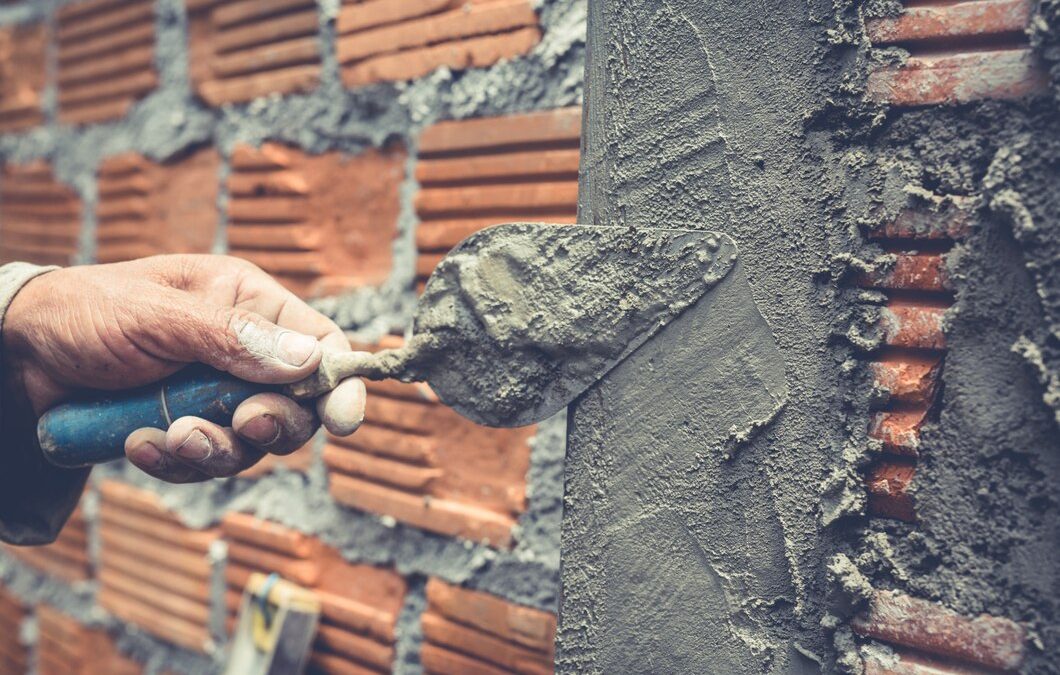Foundation cracks are a common issue for homeowners and can lead to bigger problems if not addressed quickly. While large cracks require professional intervention, you can repair small foundation cracks yourself with the right knowledge and tools. Knowing how to fix minor cracks can save you money and keep your home safe.
Small foundation cracks often appear due to natural settling or minor shifts in the ground. These cracks are usually less than a quarter-inch wide and can be found in basement walls, floors, or near windows and doors. Ignoring these cracks can lead to water leaks, mold growth, and even structural damage over time.
In this article, we will walk you through the process of identifying different types of foundation cracks, gathering necessary tools and materials, and executing the repairs step-by-step. Additionally, we will offer tips on preventing future cracks to maintain the integrity of your foundation. By following these guidelines, you can tackle small foundation issues on your own and ensure your home remains strong and stable.
Understanding Different Types of Foundation Cracks
To effectively repair foundation cracks, it’s important to understand the different types. Each type of crack can indicate different issues and may need different repair methods. Here are some common types:
- Hairline Cracks: These are very thin cracks, usually less than a quarter-inch wide. They often occur due to the concrete curing process and are generally not a major concern. However, they should still be monitored for changes.
- Vertical Cracks: Vertical cracks run up and down and are usually caused by settling or minor shifts in the foundation. These are typically less serious than horizontal cracks but should be inspected and repaired to prevent water seepage.
- Horizontal Cracks: Horizontal cracks are more alarming as they indicate significant pressure against the foundation, often due to soil pressure or hydrostatic pressure. These cracks usually require professional assessment, as they can affect the stability of your home.
- Diagonal Cracks: Diagonal cracks run at an angle and can be caused by differential settling of the foundation. They are often wider at one end and can allow water to seep in, so they should be repaired promptly.
- Stair-Step Cracks: These cracks resemble a staircase and are usually found in brick or block foundations. They indicate uneven settling and can worsen over time. Prompt attention is needed to prevent structural damage.
By identifying the type of crack, you can better understand the underlying issue and choose the appropriate repair method.
Essential Tools and Materials for DIY Repairs
Having the right tools and materials is crucial for a successful DIY foundation crack repair. Here’s a list of what you’ll need to get started:
Tools:
- Safety Goggles: Protect your eyes from debris and dust.
- Gloves: Keep your hands safe while handling materials and tools.
- Wire Brush: Clean the crack area to ensure proper adhesion of the repair material.
- Concrete Chisel and Hammer: Use these to widen the crack slightly for better filler penetration.
- Caulking Gun: This tool helps in applying sealant smoothly and evenly.
- Putty Knife: Useful for spreading and smoothing repair compounds.
- Level: Ensure that the surface is even after repairs.
Materials:
- Epoxy or Polyurethane Sealant: These are ideal for filling and sealing foundation cracks. Choose one that is compatible with the crack size and type.
- Concrete Patch or Mortar Mix: For filling larger cracks or gaps.
- Backer Rod: A foam rod that helps fill deep cracks before applying sealant.
- Clean Water: Essential for mixing compounds and cleaning the surface.
- Primer: Use a primer to prepare the crack for better adhesion of the sealant.
Make sure to gather all these tools and materials before you begin your repair project. Proper preparation ensures that your DIY repairs will be effective and long-lasting.
Step-by-Step Guide for Repairing Small Foundation Cracks
Repairing small foundation cracks yourself is manageable if you follow these steps:
Step 1: Prepare the Area
- Start by cleaning the crack with a wire brush to remove any debris or loose material. Use a vacuum to clear out the dust, ensuring the crack is clean.
Step 2: Widen the Crack
- Using a concrete chisel and hammer, carefully widen the crack to about a quarter-inch. This step allows better penetration of the repair material.
Step 3: Apply Primer
- If your sealant requires a primer, use a brush to apply it to the crack. This helps improve adhesion. Let it dry according to the instructions on the primer packaging.
Step 4: Insert Backer Rod
- For deeper cracks, insert a backer rod to about half the depth of the crack. This backer rod acts as a filler and helps save on the amount of sealant needed.
Step 5: Apply Sealant
- Using a caulking gun, apply the epoxy or polyurethane sealant into the crack. Start from the top and work your way down, ensuring the crack is fully filled.
Step 6: Smooth the Surface
- Use a putty knife to smooth out the sealant, making sure it is level with the surrounding concrete. This ensures a neat finish and helps the sealant bond well.
Step 7: Allow to Cure
- Let the sealant cure as per the manufacturer’s instructions. This could take a few hours to a couple of days. Keep the area dry and avoid any disturbance.
Following these steps carefully ensures a durable repair and prolongs the life of your foundation.
Preventing Future Foundation Cracks
Preventing future foundation cracks is vital to maintaining the integrity of your home. Here are some strategies to consider:
- Maintain Consistent Moisture Levels: Soil moisture fluctuations can lead to foundation movement. Use a soaker hose around your home to keep the soil consistently moist, especially during dry seasons.
- Proper Drainage: Ensure your home has proper drainage. Gutters and downspouts should direct water away from your foundation. Consider installing a drainage system if water tends to pool around your home.
- Manage Vegetation: Large trees and shrubs too close to your foundation can cause issues. Their roots can interfere with the soil and foundation. Maintain a safe distance or consider removing large plants that pose a risk.
- Regular Inspections: Conduct regular visual inspections of your foundation to catch small cracks early. Early detection allows for simpler repairs and prevents larger issues from developing.
- Control Humidity Levels: Inside your home, use a dehumidifier to control moisture levels, especially in basements and crawl spaces. Excessive humidity can lead to mold growth and weaken your foundation.
By employing these preventative measures, you can reduce the likelihood of future foundation cracks and keep your home structurally sound.
Conclusion
Understanding and addressing small foundation cracks are crucial for maintaining the safety and stability of your home. By recognizing the different types of cracks and having the right tools and materials, you can perform effective repairs yourself. Regular inspections and preventive measures further protect your home from future issues.
However, some foundation problems require expert assessment and repair. For any concerns beyond minor cracks, it’s important to consult with professionals to ensure the safety of your home.
Keep your foundation in top shape with Lift-Texas Construction. Our team specializes in comprehensive foundation repair services. Contact Lift-Texas Construction today to schedule an assessment with our foundation contractors and keep your home safe and stable.

